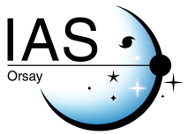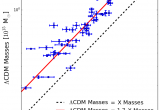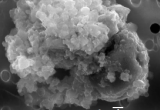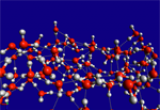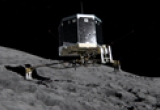To reconcile the standard cosmological model with the X-ray measured number of galaxy clusters, a team of French scientists has shown that the cluster masses should be increased by 70% compared to current estimates. These results follow the conclusions obtained by the Planck mission in 2013 from observations of galaxy clusters in the microwave domain. This huge difference is intriguing: either our understanding of the physics of galaxy clusters needs to be revised, or the standard cosmological model is incomplete.
Latest News
9 years 11 months ago
9 years 11 months ago
IAS is participating to the national open lab day "Fête de la Science" in the week of the 5th of October. After visits by students from several schools, the laboratory will be open for the general public on Sunday the 11th of October, from 2 to 6PM.
Here is the programme of activities and talks (in French) during this afternoon:
10 years 2 months ago
The interplanetary dust particles commonly called IDPs are micrometric extraterrestrial grains (typical size of ten microns). They are collected by NASA’s stratospheric aircrafts (at an altitude of ~ 25 km). Their origin asteroidal and/or cometary has always been a subject of investigation. In recent years we have conducted a systematic analysis of IDPs using infrared micro-spectroscopy through a collaboration with the SMIS beamline at the SOLEIL synchrotron. This work reveals, in one hand, the connection between asteroids/comets and extraterrestrial material collected for laboratory studies, and gives in another hand, valuable information on the relationship between organic matter and mineral phases probably due to physical and chemical processes in the primitive nebula.
10 years 2 months ago
A multidisciplinary team involving researchers from the IAS, the CIMAP, the IPNO, the GANIL, and Rio de Janeiro's PUC Catholic University has characterized in the laboratory the effects of heavy cosmic rays on the structure and sputtering of water ice in interstellar and planetary environments. These experiments are used to study phase changes induced by swift heavy ions, similar to the Galactic cosmic rays. They complement and extend the knowledge already obtained at lower energies. In addition to the ice phase change, these studies reveal the importance of water ice molecules released in the gas phase by swift heavy Galactic ions, or sputtering of interstellar ices present in dense and cold interstellar clouds.
10 years 3 months ago
After 7 long months, Philae has awoken from hibernation. Its first signs of life reached Earth on Saturday evening (June, 13th) then again the following night. The hope to see Philae awake again and communicating has just come true.
